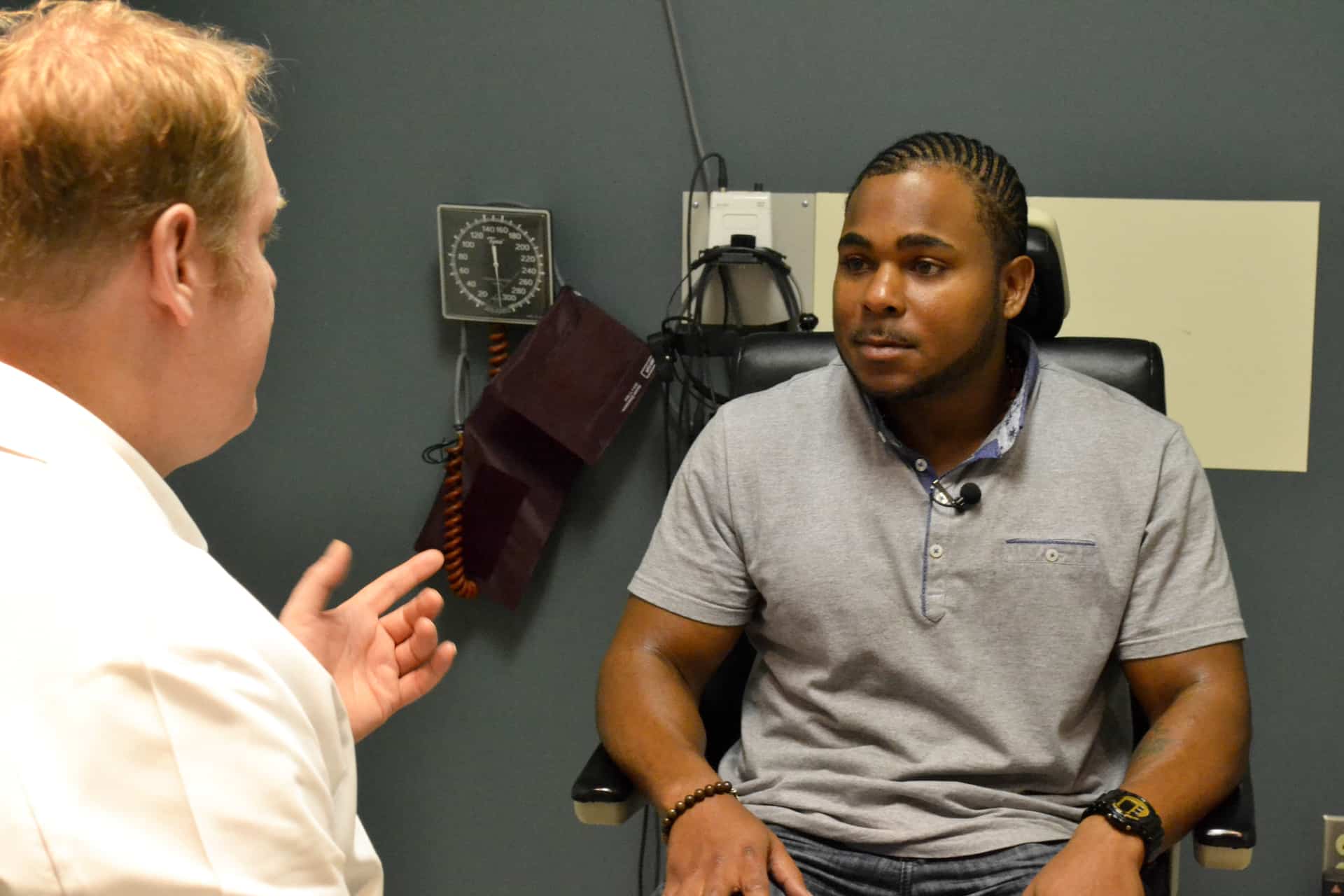Cornea Transplant Clears Blurry, Clouded World for Patient
| Jan. 14, 2016 | Every morning, Robbie Smith, 37, gets a vivid reminder of how debilitating his eyesight used to be.
Before he inserts a pair of special corrective contact lenses, “I’m only able to see a few inches from my face,” he said.
At age 10, Smith, of Little Rock, was diagnosed with keratoconus, a progressive disease in which the normally round cornea of the eye thins and begins to bulge into a cone-like shape. The curve causes astigmatism and nearsightedness. It can worsen until a person has difficulty with daily activities.
For many patients, the effects can be minimized with eyeglasses and contact lenses. Unfortunately, typical treatment options did little to help Smith.
“I could be right next to you and not be able to see your mouth, your eyes, what you’re looking at, nothing,” he said. “Everything was blurry, it didn’t matter the distance.”
Smith said he never thought of his condition as a hindrance, whether it was in school or in his personal life; it was just something he grew accustomed to. He learned to count steps and identify landmarks. He even enjoyed reading.
“My nose was in the book,” he said. “Literally.”
After more than a decade of countless eye exams and failed treatments, Smith came to the UAMS Harvey & Bernice Jones Eye Institute where he saw ophthalmologist David Warner, M.D., assistant professor and director of the cornea service in the Department of Ophthalmology in the UAMS College of Medicine.
Warner told him he was one of the 15 to 20 percent of keratoconus patients who require a corneal transplant. The Arkansas Lions Eye Bank & Laboratory at UAMS, where Warner serves as the medical director, provided the donor corneas; and Warner performed the necessary transplant surgery.
“The eye bank is dedicated to providing safe and high-quality tissue for corneal transplantation,” said Warner. “Everyone in Arkansas who needs a cornea replacement gets tissue from the eye bank.”

In addition to overseeing UAMS’ cornea service, Warner is an assistant professor in the Department of Ophthalmology and medical director of the Arkansas Lions Eye Bank & Laboratory.
The Arkansas Lions Eye Bank & Laboratory was established in 1986 and has grown to be one of the premier eye banks in the country.
It’s the generosity of an abundant number of donors that gives the eye bank the ability to provide vision restoration to so many patients, he said. This allows doctors to pick the best tissue for each surgery.
For Warner, overjoyed patients like Smith are the best part of restoring someone’s vision.
“Robbie is one of my favorite patients,” said Warner. “He’s always happy and positive. Every time I see him, he’s got a big smile on his face.”
After the corneal transplants and receiving corrective contact lenses, Smith has been able to resume activities of daily living that were once out of his reach.
“I cannot express enough thanks to Warner,” he said. “I’m incredibly thankful for UAMS, in addition to my family and friends, for helping me to regain my independence.”
With a renewed vision, Smith, a father of three children and small-business owner, has learned to cherish every moment and experience.
“There isn’t a day that goes by that I don’t look at something new for the first time,” he said.

